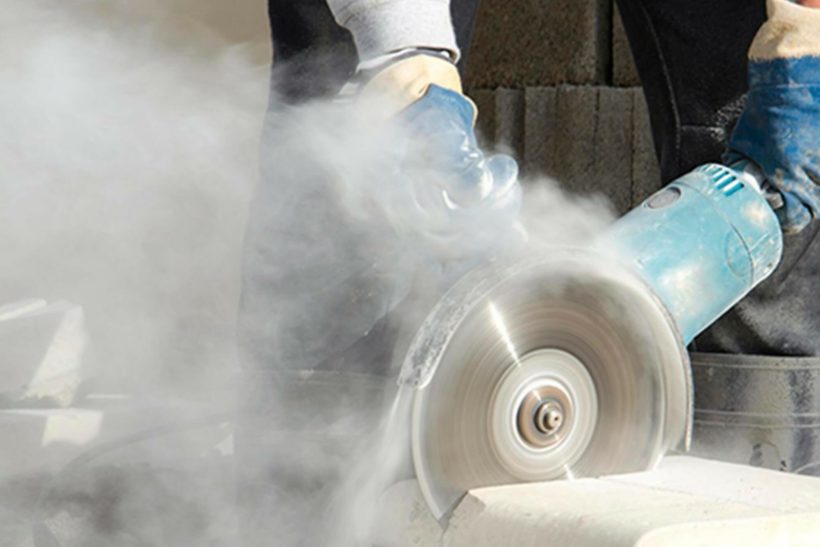QUESTION
We are reaching out to touch base on the newly-released silica standards in construction. You guys come in contact with a number of other contractors on a day-to-day basis. We are wondering what safety precautions other contractors are taking to better align themselves with OSHA’s standards.
We had OSHA inspectors on a project today at a local college. They have interviewed our employees in regards to company policy, etc. We have yet to receive feedback from our guys or receive formal notification from the GC.
Our guys use vacuums with dust masks when grinding tile or mixing mud. We grind outside when possible. Other than that, it has been a supervised common-sense approach to what we feel is appropriate. Obviously we want to remain compliant and keep our guys safe. We are looking for any input or direction you guys can provide to help us better formulate a compliance policy to keep everyone happy and safe. Look forward to hearing back from you.
ANSWER
Thanks for getting in touch with us about this very important topic.
 NTCA has prepared some documentation for you to develop a Silica Exposure Plan to help you understand and meet OSHA Regulation requirements. It can be found on our website at this link: https://www.tile-assn.com/page/PositionStatLibrary.
NTCA has prepared some documentation for you to develop a Silica Exposure Plan to help you understand and meet OSHA Regulation requirements. It can be found on our website at this link: https://www.tile-assn.com/page/PositionStatLibrary.
NTCA is working with experts from the Tile Council of North America (TCNA) and OSHA to increase our knowledge and stay up-to-speed on the latest developments of the OSHA Silica Regulations. An important aspect of the regulation is known as Table 1. This table lists the tile installation jobsite tasks that commonly create exposure to silica dust. The tasks on this table are currently in the process of changing. We do not yet know exactly what changes are being made, but we anticipate that the tasks will become better defined for us to better plan how to stay in compliance.
NTCA always discusses silica exposure and techniques to avoid creating dust, or ways to properly capture the dust we have to create, at all of our training programs such as NTCA Workshops and NTCA Regional Training events. When these programs are near you, please be sure to attend.
We are also working with TCNA and OSHA to present two in-depth silica sessions and workshops for Coverings. Attending these workshops at Coverings will be a great way to gain direct knowledge about what is required for your company to be in compliance.
Being in compliance is quite a bit more than simply moving the grinding outside or using a vacuum and a dust mask. You must have a written exposure control plan with documents that detail how you will handle certain dust generating tasks for every job and every job site. You must also have a person identified as the “Competent Person” on every job site that will ensure your plan is in place and working on the job.
Knowing a jobsite-specific task’s “Personal Exposure Limit (PEL) is a major component of determining whether your jobsite’s require certain control measures. PELs are cumulative for multiple tasks and for the length of time persons are exposed to the task. It is a lot to discuss in a simple email, but it all adds up to determine the level of protection or controls required.
As I mentioned, grinding outside isn’t necessarily an easy solution. We must protect other trades and the general public from exposure to any silica dust contractors generate on our jobs. General contractors must calculate the PELs for all trades contributing to the overall PEL for the entire job site. They will want to know how you will be containing or reducing dust-generating practices and you will want to know how the other trades are doing the same and contributing to the overall job site environment.
You will want to become familiar with the engineering controls or mechanical control measures that can be put in place to reduce dust below certain exposure levels, or eliminate it entirely. An engineering control might mean using a carbide scoring tool to score and snap cement board instead of using an angle grinder to cut it. Others range from tools we already use every day such as wet saws and snap cutters to grinder shrouds and HEPA vacuums. Speaking of vacuums, not every Shop-Vac®-type vacuum works to collect silica dust and keep it from becoming airborne. Specific vacuums are required.
Simple dust masks don’t do the trick. If engineering controls alone don’t keep your job site PEL beneath minimum thresholds you may need to look at a respirator program. Such a program may require fitness and physical testing of your employees to ensure the respirators work and they are healthy enough to wear them.
The key is to understand Personal Exposure Limits, tasks listed in Table 1, Engineering Controls, writing a company plan, providing employee training, and putting your plan in place. It sounds like a lot, but it is a good health and hygiene best practice for you and your employees.
I may be making this sound more complex than it might actually be. Please take a look at the documents available on the website and read what OSHA has to say on their website at https://www.osha.gov/dsg/topics/silicacrystalline/. I expect you will be getting some excellent feedback from your employees. I encourage you to contact the OSHA inspector that visited your job site – I am sure they will be willing to help your understanding of the regulation.
– Mark Heinlein,
NTCA Training Director


Mark Heinlein
Mark Heinlein is Training Director for the National Tile Contractors Association. He is Certified Tile Installer #1112 and currently a Ceramic Tile Education Foundation evaluator for the Certified Tile Installer program. Heinlein was the owner of Mark Heinlein Surfaces of Negaunee, Michigan.







